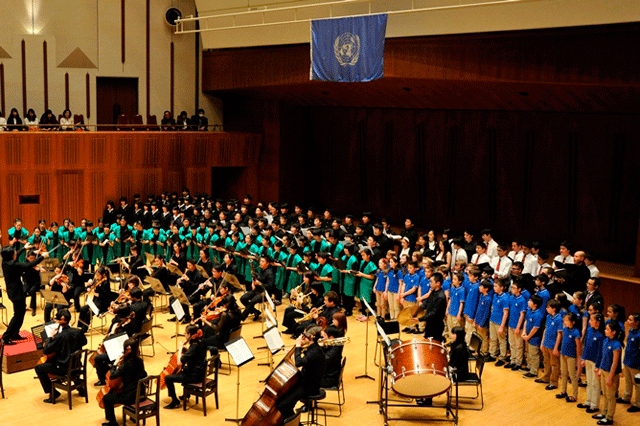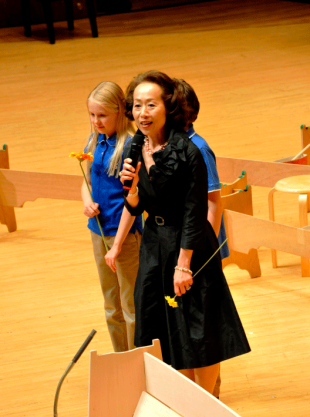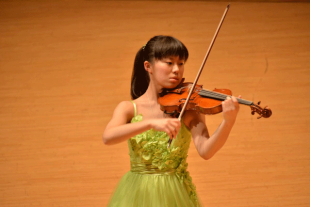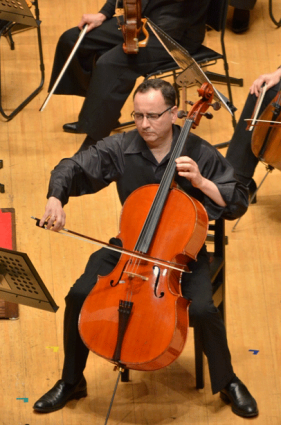This Friday, the Harmony for Peace organization will present a multicultural concert in Hiroshima, where local and international performers will honor the city’s tireless efforts to champion worldwide peace and celebrate the friendship between Hiroshima and its sister city, Daegu, Korea.
By Sarah Custen
This is Harmony’s second Japan-based concert in 2015, and is the latest in a series of international and internationally-minded concerts that began with the organization’s founding in 2009.
Harmony for Peace’s founder and executive director, Tomoko Torii, has been actively promoting intercultural exchange since her late teens, with a focus on the inclusion and well-being of children. In response to the general decline of musical education U.S. schools, Torii sought to emphasize “the richness of multicultural understanding” through music, founding her first NPO (Intermusica) in 1999, followed by Harmony for Peace, a decade later. “I felt a desire to build an international platform for musicians and artists,” she said, “to use their talents to inspire change within a world full of social, religious and political turmoil and conflict.”
For their first concert, in 2010, Harmony for Peace united renowned artists from six countries at Carnegie Hall to promote nuclear disarmament and improved international trust, in honor of the Non-Proliferation Review Conference at the United Nations. They vowed to hold a Peace Concert every five years to show support of the UN’s Non-Proliferation Treaty. This year they’ve organized multiple concerts: last April, in Tokyo; this Friday in Hiroshima; and this coming September in Philadelphia, where Torii is based. They also sponsor a number of related events, including a “Peace Art Journey” world tour, scheduled to exhibit the work of 12 visual artists in both Hiroshima and Nagasaki this summer before continuing on to the U.S. and Europe.
The thing is, until you go to one of Harmony’s concerts or events, you can’t really appreciate or understand the efficacy of their mission and message. We are so inundated with information and images, riding waves of data that bring us details on another natural disaster, videos of animals befriending the differently abled, statistics on the rise of U.S. gun violence, or President Obama singing “Amazing Grace.” It is easy to find an uplifting clip or a listicle that quickly boosts our spirits but is just as quickly forgotten. It is quite another thing to be truly moved or inspired—to connect with a message for peace.
But it isn’t always convenient. So you go to the concert on an evening in April, squeezing it into your busy schedule. You sit down, uncomfortable, overburdened with bags, hoping that if (when) you nod off, you won’t snore. This is the first time you’ve stopped moving all day—hell, all week. This is another item on the neverending to-do list, and so you sit back, ready to endure, before the next task.
The music starts. Japanese youth perform traditional wadaiko or koto, showing dedication to an ancient art form, and doing so in the name of peace, performing in front of a packed grand hall with such focus and determination, skinny limbs in sync, offering up a timeless call, a gift in service of something so much bigger than themselves.
There are children’s choirs: gangly, gap-toothed, cowlicks half-tamed, and eyes fixed on their teachers, who conduct them through innocent, simple songs. “Give us peace, prosperity and love for all mankind,” they sing, “We are one,” in voices so high and unbroken that your jaded heart begins to soften; you want to believe, want to make it true for these kids who are so brave, so good, and so young.
Older choirs, too—high school boys with soft baby faces and impossibly deep baritones, girls with voices like angels, bright, piercing, terrifying, perfect, and powerful. They fill the hall with interwoven harmonies, so thrilling and talented that, as interlocking soundwaves cradle you, suspended, your mind sets to wander and wonder: What have they seen? What do they know of nuclear warfare? What does peace mean to them? Certainly more than it has meant to you, as their earnest faces and impeccable melodies attest.
Nowhere is this spirit more apparent than in young solo violinist, Honoka Kikukawa, the 2015 “Junior Peace and Music Ambassador.” She won her title through an audition and essay process, wherein she described the role of the musician in promoting cultural peace and understanding: “What is the way to unite our hearts? It must be music. Music is a common language.”
As Torii explains, Kikukawa will represent Harmony For Peace in the next year, using musical events as “an opportunity to become a cross-cultural artist. Through performances, collaborations and forums, she will learn other cultural techniques and backgrounds, sharing her message of peace with her fellow musicians and peers.”
Kikukawa’s performances are heartbreaking: she has a mature, technically advanced sound, but one filled with melancholy delicacy. All eyes were riveted on the petite soloist, austere and professional, seemingly unaware of the large audience, locked in an intimate dance with her instrument, slim fingers flying fluently across the strings.
By the time the concert had moved to moving performances from world-renowned professionals, you can sit back and enjoy the music, having made up your mind that life is worth living, that people are basically good, that art is right, there is power in beauty, and that you will be better, you will do your best.
In fact—chins tucked into our tightly held smartphones, poised as if about to fall in—we forget that there is peace and beauty all around us, already. But just as a soloist can rise above the cacophony of an entire orchestra, or a choir of voices can cut crystal clear across a massive theater, so too can peace be achieved one person at a time. And, in the hands of such skilled musicians as solo cellist Ohad “Udi” Bar David—an Israeli-born, classically trained, genre-hopping improviser—you realize that peace and intercultural exchange are not only necessary, but have the potential to be fun, even downright delightful.
“I think peace can unleash a lot of fun, David explains. “I think fun can include a sense of humor, which brings people closer together, because peace is all about…basic human interaction; it’s about the commonalities. Something we all share, across borders. Because everybody can smile, under certain circumstances, or have fun, under certain circumstances. So [music] is a good source, it’s a good bridge, and a bridge leads to peace eventually.
“Performing concerts for the sake of peace, for the purpose of peace, for the direction of peace, does have an impact on everyone who comes to hear the concert.”
David has worked with Harmony for Peace for years, first connecting with Torii in Philadelphia over their shared interests in cross-cultural music and arts. “Coming from Israel, and just experiencing conflict too much, I wanted to be instrumental as an artist in trying to resolve conflicts,” David says.
Other celebrated artists who’ve collaborated with Harmony for Peace include famed Japanese violinist Mariko Senju and internationally-trained Japanese conductor Reona Ito. The concert this Friday in Hiroshima will feature Yoonhak Baek, an acclaimed South Korean conductor, Japanese vocal and piano duo “Alchemist,” and South Korean baritone Daniel Oh, as well as Junior Ambassador Honoka Kikukawa, the Hiroshima University Symphony Orchestra, and Hiroshima Motomachi High School and Noboricho Elementary School choirs. It is sure to be an unforgettable event.
Even if you are unable to attend Harmony’s concert or visit their touring art exhibition, you can still take part in their efforts. “This grand mission of worldwide peace does not fall to one person or organization, but rather to a global family, working together to promote international and multicultural friendship and understanding,” said Torii. “Through our organization, we are always looking for collaborations, volunteers, sponsors, donors, musicians and school groups to continue with our efforts.”
“I work under the belief that music and art are universal languages,” Torii stated. “Joining together in song, merging sounds and experimenting musically very much display an effort to embrace diversity, yet overall, find a way to unite.”
Harmony for Peace’s Hiroshima concert begins at 6 pm on Friday, July 3, at JMS Aster Plaza’s Main Concert Hall. For more information about the show, or to find out how you can get involved with Harmony for Peace, visit harmonyforpeace.org/content/peace-concert-hiroshima or Harmony for Peace’s Facebook Page.












